The modern workplace is characterised by constant disruption. Emerging technologies such as artificial intelligence (AI), automation, and data analytics are redefining job roles, while remote work and hybrid models demand new interpersonal, technical, and digital competencies.
For result-driven businesses — where leveraging on employees’ performance is of the utmost importance — skill gaps are the biggest detriment to attaining business goals. According to recent studies by the World Economic Forum, over 50% of organisations worldwide report skills shortages as a significant impediment to growth, with Skills gaps and challenges in attracting talent expected to be key barriers to business transformation in Nigeria over the next five years.
These gaps not only hinder operational efficiency but also increase costs, reduce employee morale, and limit adaptability. In dissecting the complex phenomenon of skills gaps, it’s crucial to understand the underlying causes that contribute to this mismatch between job requirements and workforce capabilities, and develop effective strategies to bridge these gaps.
In a quest to understand the impact of skills gaps in the Nigerian workforce, Proten International surveyed HR managers, line managers and department heads, learning and development experts, and business owners. The aim of this research report is to:
- Understand organisational skills gaps and their implications.
- Analyse the causes and consequences of skills deficiencies.
- Propose a framework for identifying and addressing skills gaps.
- Offer actionable strategies to enhance efficiency through workforce development.
2. Understanding Skills Gaps
2.1 Definition
A skills gap refers to the disparity between the skills an organisation requires to achieve its objectives and the skills its employees currently possess. The data from our survey revealed that 93.8% of managers and business leaders believe that there are very or somewhat significant skills gaps in their industry.
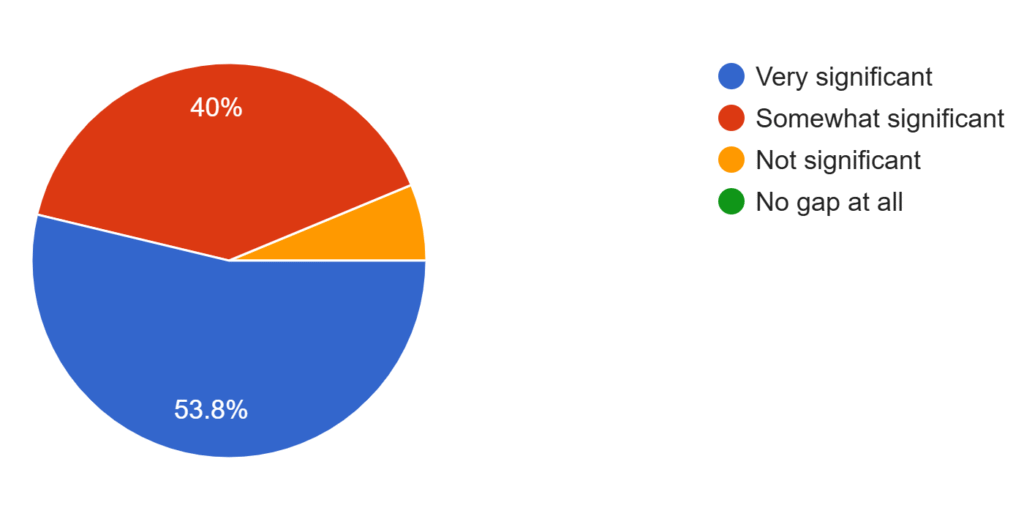
Source: Proten International
Skill gaps are often the difference between the ideal employee and the actual employee. These gaps can manifest as:
- Technical Skills Gaps: Technical skills are also referred to as hard skills. These gaps are noticed when an individual lacks the specific skills required to do their jobs effectively. These could be a lack of proficiency in tools, software, or industry-specific methodologies.
- Soft Skills Gaps: These skill gaps are evident when an individual has deficiencies in communication, problem-solving, leadership, or adaptability. TSoft skills are crucial for maintaining healthy workplace relationships and ensuring seamless collaboration within a team.
- Strategic Skills Gaps: This is an organisational skills gap that signifies the inability to align workforce capabilities with long-term business goals. Oftentimes, this also means insufficient strategic thinking, decision-making, and motivational skills.
2.2 Causes of Skills Gaps
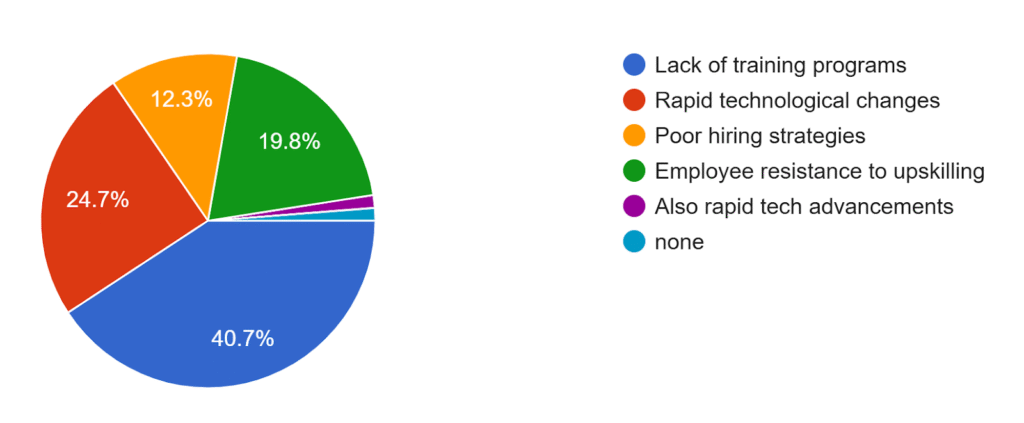
Source: Proten International
Skills gaps emerge from a variety of factors. Understanding these underlying causes of the skills gap can aid organisations in developing effective strategies to bridge these gaps, fostering sustained growth and success.
- Technological Advancements: As technology evolves at a breakneck speed, the skills required to operate new software, tools, or machinery can lag. We live in an era where rapid innovation far outpaces the training and time required to master these new technologies. From our survey, 24.7% of professionals think that rapid technological advancement is the primary cause of skill gaps in their organisations.
- Educational Misalignment: A gap often exists between the skills taught in educational institutions and those required by employers. Curricula can fall behind industry advancements, leaving graduates unprepared for the job market. Moreover, traditional education pathways may not fully support lifelong learning and ongoing skill development.
- Workforce Aging: As experienced workers retire, organisations face the challenge of transferring institutional knowledge to younger generations. Also, skills gaps are often observed between different generations in the workplace where younger employees are more hands-on with new technological skills than older employees.
- Resistance to Upskilling: Some employees may be resistant to upskilling or reskilling due to age or demography, fear of change, concerns about job security, or a lack of confidence in their ability to learn new skills. 19.8% of the managers we surveyed said that resistance to upskilling is the primary source of skill gaps in their organisations.
- Insufficient Training: 40.7% of professionals in our survey said that lack of training was the primary culprit when analysing causes of skills gaps. Limited investment in employee development exacerbates skill deficiencies. Continuous learning and development is paramount in nurturing and maintaining a skilled workforce.
- Poor Hiring Strategies: 12.3% of the business leaders we surveyed agree that occasionally, gaps occur between the actual skills of a new hire and the skill demands of the role they were hired for. This mismatch could stem from unclear job descriptions or a disconnect between educational programs and industry needs.
2.3 Impact on Efficiency
When asked how often their teams encounter challenges due to skills gas, all the professionals surveyed encounter some form of challenges while 71.6% admitted to experiencing these challenges at least monthly.
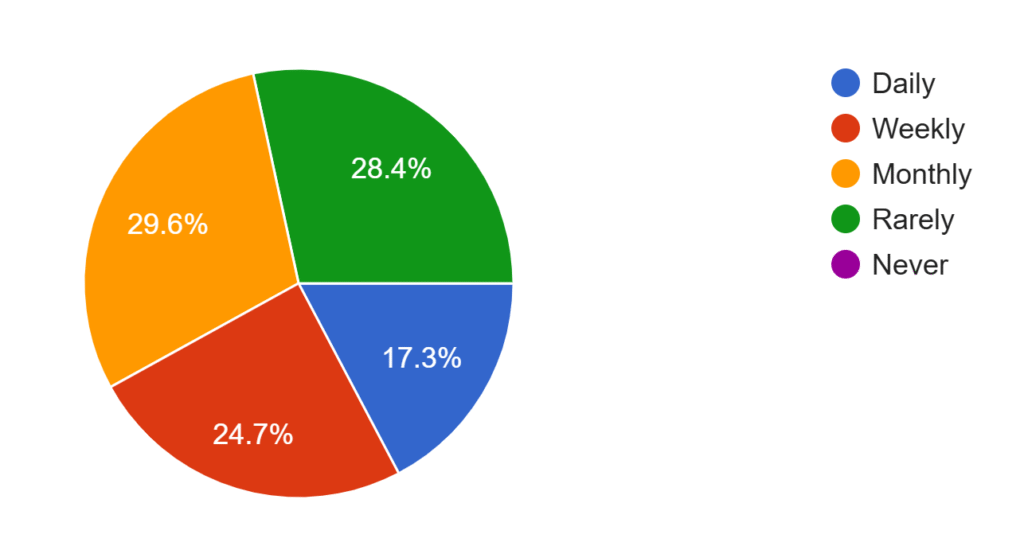
Source: Proten International
Skills gaps undermine organisational efficiency in several ways:
- Reduced Productivity: Due to skill gaps, employees regularly have to tackle tasks they are trained for, and struggle to perform these tasks effectively. This slows workflows and reduces the quality of the output. 35.8% of the business leaders we surveyed admitted that skill gaps have led directly to reduced productivity in their organisations.
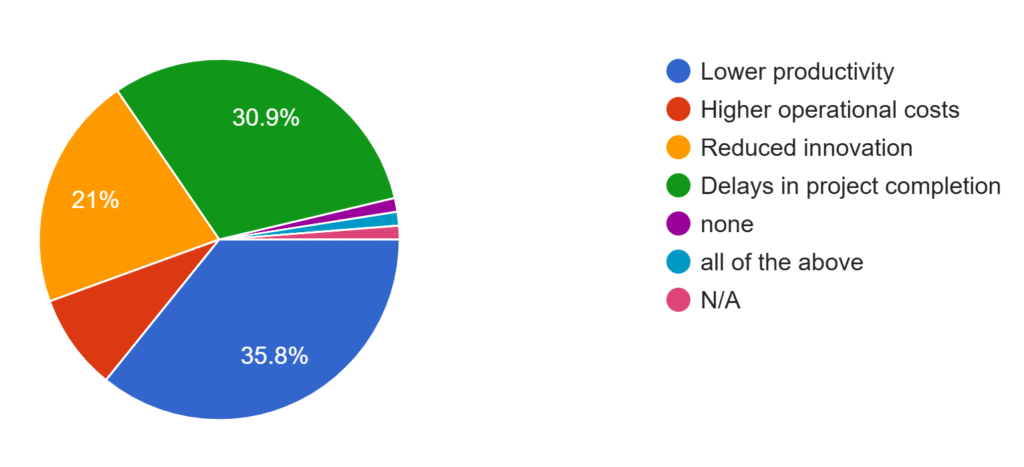
Source: Proten International
- Higher Operational Costs: Lack of expertise leads to mistakes, rework, and quality issues which inflate operational and project costs for organisations. Skill gaps have led to higher operational costs for 8.6% of organisations surveyed.
- Employee Burnout: Many times, skilled members of the workforce can become overburdened and experience burnout due to picking up the slack and compensating for the unskilled ones. This is not optimal for employee morale and engagement and can also result in delays in project completion time. According to our survey, 30.9% of organisations experience delays in project completion due to skills gaps.
- Innovation Stagnation: A rapidly changing business environment means that organisations need agile workforces that are learning and adapting quickly to meet the demands of the market. Without the right skills, organisations fail to capitalise on new opportunities.
3. Framework for Identifying Skills Gaps
Skills gaps vary from organisation to organisation. Our survey showed that technical and digital skills account for 65.5% of the skills gaps that organisations have while gaps in soft skills like communication and people skills account for the other 34.5%.
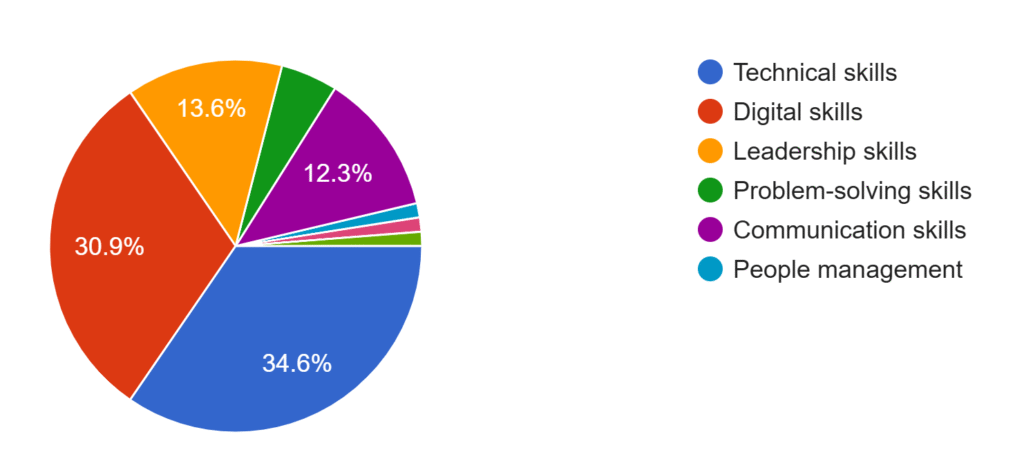
Source: Proten International
To bridge skills gaps, organisations must first identify them with precision. A structured approach includes:
3.1 Workforce Skills Assessment
- Skills Audits: Conduct surveys, interviews, and performance reviews to map current capabilities.
- Competency Frameworks: Define required skills for each role aligned with organisational goals.
- Performance Metrics: Analyze KPIs to pinpoint areas of underperformance linked to skills deficiencies.
3.2 Future-Focused Analysis
- Trend Forecasting: Evaluate industry trends (e.g., AI adoption, sustainability) to anticipate future skill needs.
- Strategic Alignment: Ensure skills align with long-term business objectives, such as digital transformation or market expansion.
3.3 Employee Feedback
- Surveys and Focus Groups: Gather insights from employees about perceived gaps and training needs.
- Exit Interviews: Identify skills-related frustrations from departing staff.
4. Strategies for Bridging Skills Gaps
From our research, many business leaders were upfront about the strategies that they have adopted or are currently using to address skills gaps in their organisation. As suspected, on-the-job training is the most deployed strategy at 44.4%.

Source: Proten International
Addressing skills gaps requires a multifaceted approach tailored to the organisational context. Below are proven strategies:
4.1 Targeted Training and Upskilling Programs
- Customised Learning Paths: Learning has to be tailored to the specific needs of individuals. Develop role-specific training modules based on skills audits.
- Microlearning: Knowledge is better absorbed in small and regular bits. Offer bite-sized, on-demand content to accommodate busy schedules.
- Certifications and Partnerships: Collaborate with universities or platforms (e.g., Coursera, LinkedIn Learning) for accredited courses.
- On-the-Job Training: Mentorship is critical to effective learning and development. Pair employees with mentors to facilitate hands-on skill development.
4.2 Leveraging Technology
- Learning Management Systems (LMS): A Learning Management System (LMS) is a software application designed to manage, track, automate, and deliver educational courses, training programs, and learning materials. Deploy LMS platforms to track progress and deliver training.
- AI-Powered Tools: Artificial Intelligence is fast becoming an integral part of business and can also be deployed for learning and development. Use AI to recommend personalised learning resources and simulate real-world scenarios.
- Automation: In this digital era, it is important to embrace automation by reducing manual workloads, allowing employees to focus on higher-value, skill-intensive tasks.
4.3 Recruitment and Talent Pipeline Development
- Strategic Hiring: In situations where skills gaps cannot be bridged through training and development efforts, organisations can strategically recruit candidates with in-demand skills to fill immediate gaps.
- Apprenticeships and Internships: Building a pipeline of talent supply through internships and graduate recruitment can be a very effective means of creating a steady stream of highly skilled manpower, especially for large organisations.
- Diversity Initiatives: Tap into underrepresented groups to attract valuable unique competencies and broaden the skill pool.
4.4 Fostering a Learning Culture
- Leadership Support: Leadership commitment is important to fostering a learning culture. Organisations must encourage managers and executives to champion continuous learning.
- Incentives: We are creatures of incentives and you get more of whatever you reward. By rewarding employees who pursue skill development (e.g., bonuses, promotions), you can incentivise employees to upskill and bridge skill gaps.
- Knowledge Sharing: Promote cross-departmental collaboration and peer-to-peer learning.
4.5 Performance Management Integration
- Regular Reviews: Incorporate skills development into performance evaluations. Employees are more likely to be engaged with their upskilling initiatives when they know that it is part of their KPIs.
- Goal Setting: Align individual objectives with organisational skill priorities. This should form part of the strategic alignment strategy of managers and business leaders.
- Feedback Loops: Provide ongoing coaching to reinforce learning.
5. Measuring Success
According to the data acquired from our survey on skills gaps, currently, only 28.4% of managers and professionals believe that their strategies are effectively bridging the skills gaps that they have.
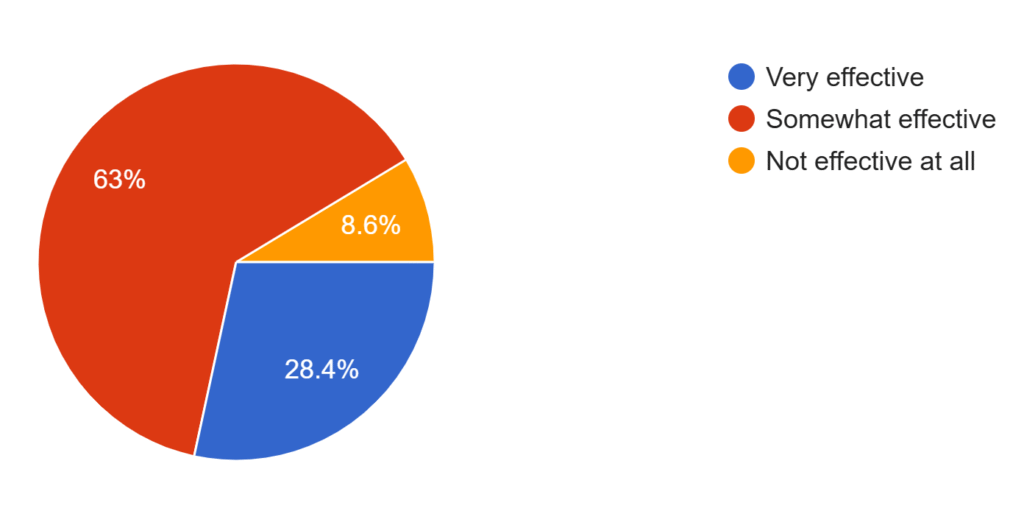
Source: Proten International
To ensure efforts yield enhanced efficiency, organisations must track outcomes:
- Productivity Metrics: KPIs are the best sources to identify a skill gap and measure if those gaps have been addressed effectively after intervention programmes. Organisations must measure output per employee post-intervention.
- Error Rates: Typically, after skills gaps are successfully bridged, the quality of work should improve and errors should be reduced. After interventions, monitor reductions in mistakes tied to skill improvements.
- Employee Engagement: Upskilling initiatives for low-performing employees should lead to less stress and burnout for the high performers who have been compensating for existing skills gaps. Assess morale and retention through surveys to ascertain that this is achieved.
- Customer Satisfaction: One of the stakeholders who bear the brunt of skill gaps and poor quality are the customers. Organisations must link operational improvements to client feedback to evaluate relative levels of client satisfaction before and after intervention measures.
6. Conclusion
Addressing skills gaps is crucial for organisations aiming to stay competitive and resilient in today’s fast-changing business landscape. As already discussed, these gaps present significant challenges, including reduced productivity, higher operational costs, and limited career growth opportunities for employees.
However, organisations can bridge these gaps by taking a proactive approach and implementing targeted strategies. This includes conducting skills gap analyses, investing in employee training and development, collaborating with educational partners, and fostering a culture of continuous learning. By leveraging these tools, businesses can build a skilled workforce and drive long-term success. The chart below outlines the support employees need to effectively bridge skill gaps, according to our survey. Almost half of the respondents (48.1%) want more training opportunities while another 19.8% want stronger leadership commitment to upskilling and reskilling initiatives.
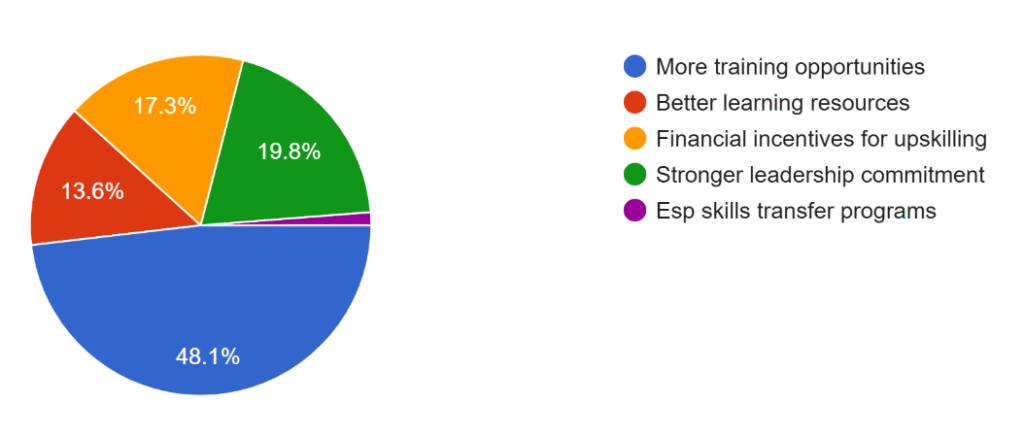
Source: Proten International
Skills gaps pose a significant threat to organisational efficiency, but they also present an opportunity for growth. In an era defined by rapid change and transformation, bridging skills gaps is not just a necessity—it’s a competitive advantage.
How Proten Internation Can Help
Proten International is a human capital development firm that offers a wide range of training, coaching, and consulting services to individuals, small businesses, corporate organisations, and governmental institutions. Our focus is to align every organisation’s activities relating to people, process, and technology closely with its business strategy and vision.
We are on standby to help you identify the skills gaps that exist in your organisation through our technical and behavioural competency assessments, and bridge those gaps using a combination of training and upskilling initiatives tailored to your needs.
Our comprehensive approach will help you make informed decisions about new initiatives and training programmes, maximising your return on investment.

